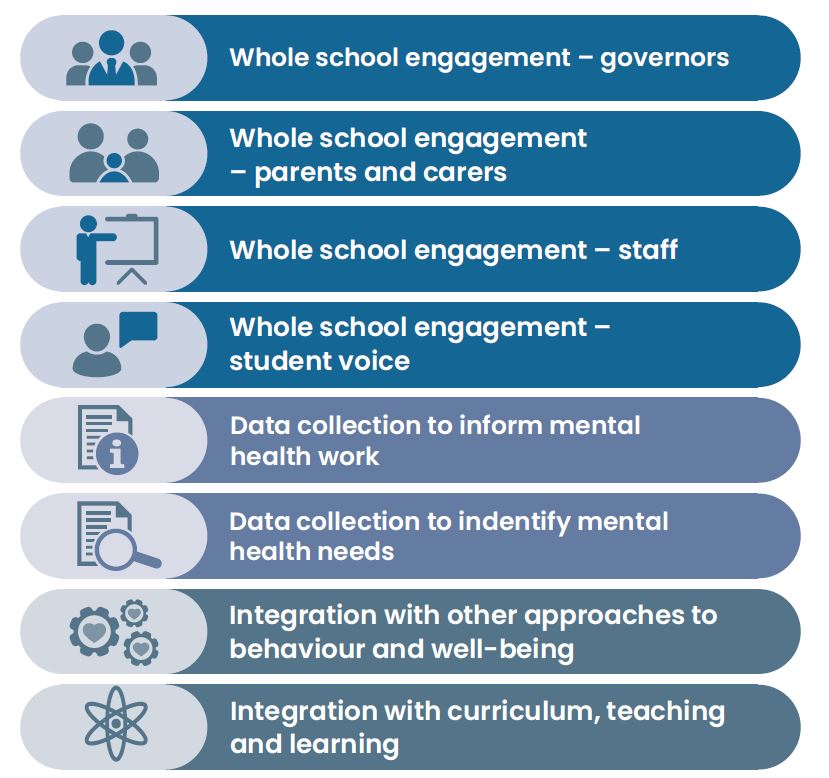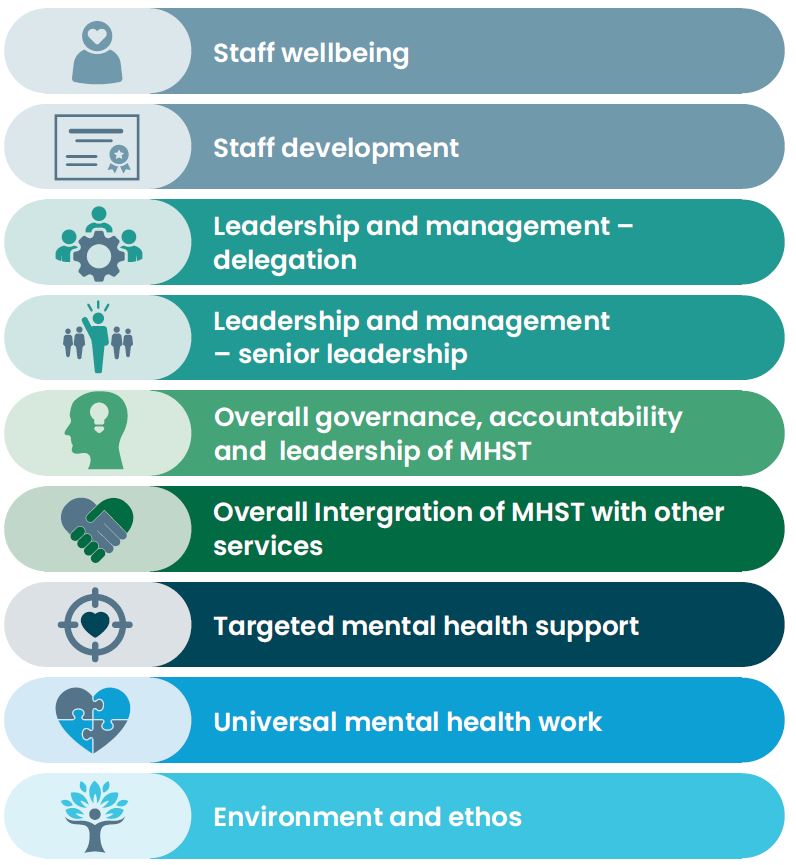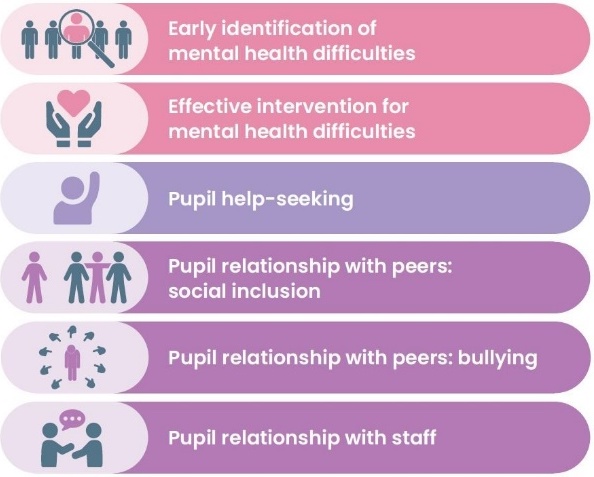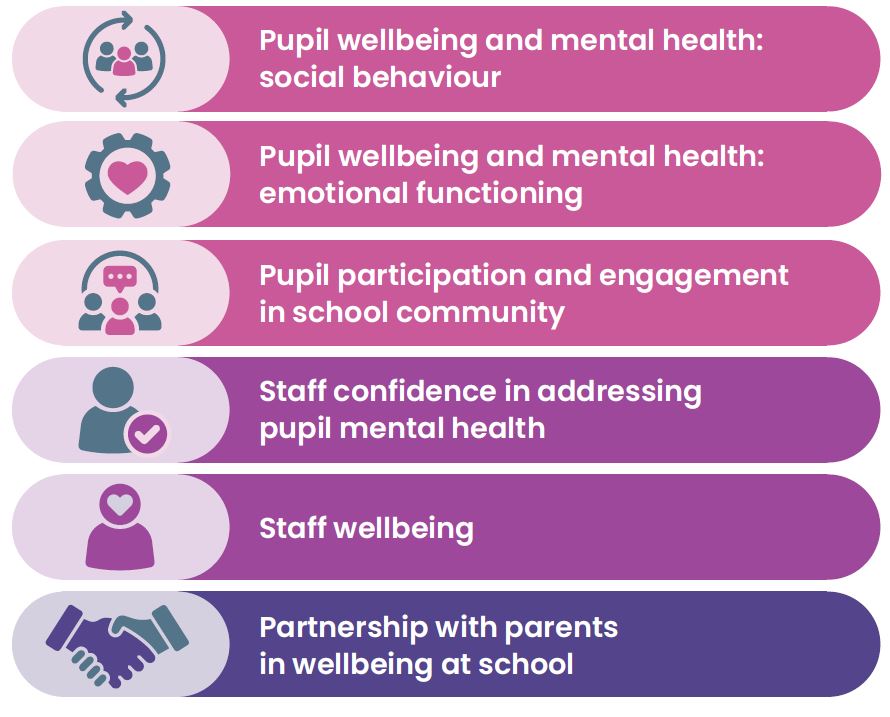The purpose of this toolkit is to allow educational settings to reflect regularly on the implementation of their WSCA work and track its impact on key outcomes. This can help inform their whole school and college approach work in a targeted way and act as a springboard for discussions with stakeholders.
Educational settings will be able to self-assess their WSCA implementation and outcomes using our two tools: the Implementation Self-Assessment Tool (ISAT) and the Outcomes Self-Assessment Tool (OSAT).
Schools and colleges will also be able to track the self-assessment data over time and develop their WSCA work, making adjustments where needed, based on their progress.
Watch our videos on the development of the WSCA Toolkit, and the accompanying How-to guide below:
A whole school and college approach to mental health and wellbeing is a co-ordinated approach across an educational setting to promote emotional wellbeing, identify emotional and mental health difficulties at an early stage, and provide support to those who need it.
The WSCA involves multiple components. Public Health England (2021) outlined eight key principles to this work:
- Curriculum, teaching and learning.
- Enabling student voice.
- Staff development to support their own wellbeing and that of students.
- Identifying need and monitoring impact of interventions.
- Working with parents/carers.
- Targeted support and referral.
- An ethos and environment that promotes respect and values diversity.
- Leadership and management.
Evaluation of the WSCA is crucial to understand where a school's approaches are benefitting the students and to ensure the WSCA meets the needs of students and families.
In our previous work on the Best Practice Review of the WSCA, we identified that, whilst most MHSTs and educational settings reported using standardised measures for targeted work with individual pupils, there was little or no use of measures to systematically monitor and evaluate the impact of the WSCA. So, we set out to develop a tool that all education settings and MHSTs can use.
The toolkit is designed for any school/college to use. We suggest that senior leaders within each setting completes the ISAT and OSAT, whilst incorporating the views of pupils and staff and evidence from across the setting.
The toolkit can be used as frequently as needed, to the extent that this is considered to be useful for the educational setting. There is no prescribed time frame, but many settings may choose to track outcomes and implementation, comparing ratings made relatively early and late within each academic year.
We do recommend completing the toolkit at two or more points throughout the academic year to allow settings to view any progress and to potentially identify areas which may not be progressing as much as others.
This toolkit has been developed with the input of pupils and school staff. We also tested this tool with 24 schools in the South, South East and North East of England. Findings from the project can be found here.
The ISAT is a self-assessment form which encourages schools and colleges to reflect on what WSCA work is being done and how it is being implemented in the settings. Schools and colleges will be able to see how their WSCA work is developing over time and whether or not there are certain aspects which are being implemented more than others.
There are 17 criteria for implementation where schools and colleges can rate themselves on each one. Each criterion relates to a particular area of whole-school work on mental health. They are:
Each category contains a rating element to allow settings to assess the level at which they are currently operating.


For each criterion, there are four possible ratings which the setting must choose from. These range from: 0 (little or no whole-school work in that area) through to 3 (the most embedded and integrated approach to whole-school work in that area).
The OSAT is a self-assessment form which encourages schools and colleges to reflect on the impact of the WSCA work. Schools and colleges will be able to identify the specific outcomes of their work and see how their WSCA work is impacting the wellbeing of pupils and staff and whether or not there are certain aspects that are progressing more than others.
There are 12 criteria for outcomes where schools and colleges can rate themselves on each one. Each criterion relates to a particular area that was considered important in showing the impact of WSCA by pupils and staff.
The 12 key criteria are:


For each question, there are four possible ratings which the settings must choose from. These range from: 0 (little or no indicator of positive outcomes) through to 3 (the strongest indicator of positive outcomes).
In addition to this, for the OSAT, the setting must also evaluate the quality and depth of evidence they can provide for this assessment and provide a rating for that too. For each question, there are three possible evidence ratings. These range from: 1 (only limited evidence) through to 3 (strong evidence is provided for the outcome rating, with written documentation in line with an agreed plan for data collection, and confidence about the reliability, validity, coverage, and independence of data collection).
